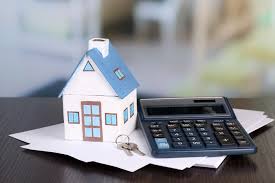Certify and Increase Opportunity.
Be
Govt. Certified Real Estate Consultant
Mortgage is a mode of transfer of immovable property with a view to securing an advance by way of a loan or an existing or future debt. A person seeking loan is called borrower or debtor and the person giving loan is called lender or creditor. When a movable property is offered as security it is called hypothecation, when an immovable property is offered as a security, it is called mortgage.
Mortgage lending is the primary mechanism used in many countries to finance private ownership of residential and commercial property. Although the terminology and precise forms will differ from country to country, the basic components tend to be similar:
- Property: the physical residence being financed. The exact form of ownership will vary from country to country, and may restrict the types of lending that are possible.
- Mortgage: the security interest of the lender in the property, which may entail restrictions on the use or disposal of the property. Restrictions may include requirements to purchase home insurance and mortgage insurance, or pay off outstanding debt before selling the property.
- Borrower: the person borrowing who either has or is creating an ownership interest in the property.
- Lender: any lender, but usually a bank or other financial institution. (In some countries, particularly the United States, Lenders may also be investors who own an interest in the mortgage through a mortgage-backed security. In such a situation, the initial lender is known as the mortgage originator, which then packages and sells the loan to investors. The payments from the borrower are thereafter collected by a loan servicer.)
- Principal: the original size of the loan, which may or may not include certain other costs; as any principal is repaid, the principal will go down in size.
- Interest: a financial charge for use of the lender’s money.
- Foreclosure or repossession: the possibility that the lender has to foreclose, repossess or seize the property under certain circumstances is essential to a mortgage loan; without this aspect, the loan is arguably no different from any other type of loan.
- Completion: legal completion of the mortgage deed, and hence the start of the mortgage.
Redemption: final repayment of the amount outstanding, which may be a “natural redemption” at the end of the scheduled term or a lump sum redemption, typically when the borrower decides to sell the property. A closed mortgage account is said to be “redeemed”.
There are many types of mortgages used worldwide, but several factors broadly define the characteristics of the mortgage. All of these may be subject to local regulation and legal requirements.
- Interest: Interest may be fixed for the life of the loan or variable, and change at certain pre-defined periods; the interest rate can also, of course, be higher or lower.
- Term: Mortgage loans generally have a maximum term, that is, the number of years after which an amortizing loan will be repaid. Some mortgage loans may have no amortization, or require full repayment of any remaining balance at a certain date, or even negative amortization.
- Payment amount and frequency: The amount paid per period and the frequency of payments; in some cases, the amount paid per period may change or the borrower may have the option to increase or decrease the amount paid.
- Prepayment: Some types of mortgages may limit or restrict prepayment of all or a portion of the loan, or require payment of a penalty to the lender for prepayment.
It include the followings:
Apply for Real Estate Certification Now!!
http://www.vskills.in/certification/Certified-Real-Estate-Consultant


